2023. 09. 28.
The engineers of the “Hardware in the Loop” simulation team of the Vehicle Development unit feel at ease in the virtual environment they “build”, but they also put their simulation results to the test on a physical platform during the hardware trials.
They have an interesting, complex job, as they can make good use of their electrical engineering, IT and vehicle technology skills all at once. They see the technological trends of the automotive industry develop under their hands and they can influence the hardware and software offering of future cars. Sounds exciting? Learn more from the stories of our two colleagues.
Máté Horváth (MH): I majored in Engineering Informatics at the Faculty of Electrical Engineering and Informatics of BME (Budapest University of Technology and Economics) some 11 years ago. Besides information technology, I was always attracted to cars. My father was a car dealer and fleet manager for a long time, so besides computers, cars have also played a key role in my life since my childhood. I started my career at one of the Hungarian mobile service operators as a network engineer, but I did not abandon my passion for cars. This is why I applied to Audi IT in 2015, where I worked in software management for 3 years. It was a classic IT task, we managed the internal IT systems for the members of the VW Group. I liked my job but my ultimate goal was to work with cars as an IT specialist. This is why I completed the postgraduate training programme in electric vehicle powertrains at Széchenyi István University and applied for the first open position in the Vehicle Development unit in 2018.
Initially, I wrote custom applications for the measurement and simulation processes related to vehicle development to simplify the daily lives of development engineers and make development procedures more efficient. I enjoyed this job as well, as I was able to help my colleagues with tangible and useful tools while getting to know the discipline of vehicle development.
In 2022, a new competence emerged in the Vehicle Development unit called “Hardware in the Loop” or HiL for short. This also required a completely new job requiring IT, electrical engineering and vehicle technology competences concurrently. This was the position of the HiL Simulation Engineer. I knew this would be the job where I could fulfil my professional aspirations.
Hana Salameh (HS): First of all, I would like to say that I am very grateful to be here at Audi Hungaria. Although I am not Hungarian, I can fully be myself here and that is a great feeling. It is good to know that it is individuality that counts here, not stereotypes. My name is Hana Salameh and I come from Jordan. I have recently joined the development team as an employee.
I came to Hungary for my master’s degree, and I was admitted to the mechatronics programme at the University of Debrecen. In the summer of 2022, I saw an online ad by the Audi Development Camp (ADC) and knew right away that it was the place where I had to be. I quickly submitted my application and it was one of the best decisions of my life. ADC has allowed me to develop not only my professional competencies, but also my communication and presentation skills. I learned how to solve tasks in a team and how to represent my position in a professional environment. I could learn from people who are credible and successful in their profession. We had the opportunity to develop and showcase our potentials and professional know-how, which led to a job offer from Audi Hungaria. I was extremely happy and, of course, I immediately said yes to the opportunity, so I have been working on technical development for exactly one year. I have always wanted a job like this.
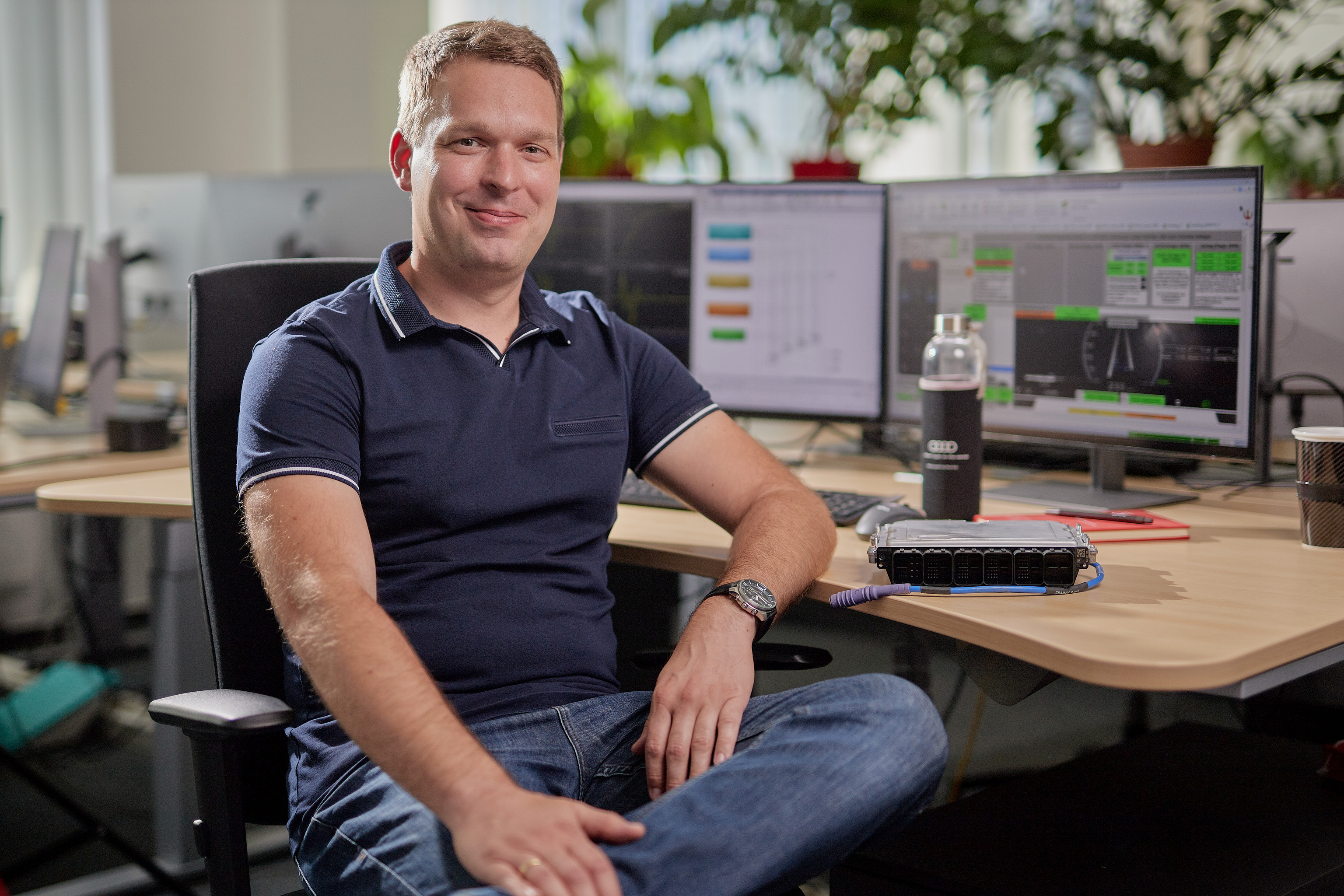
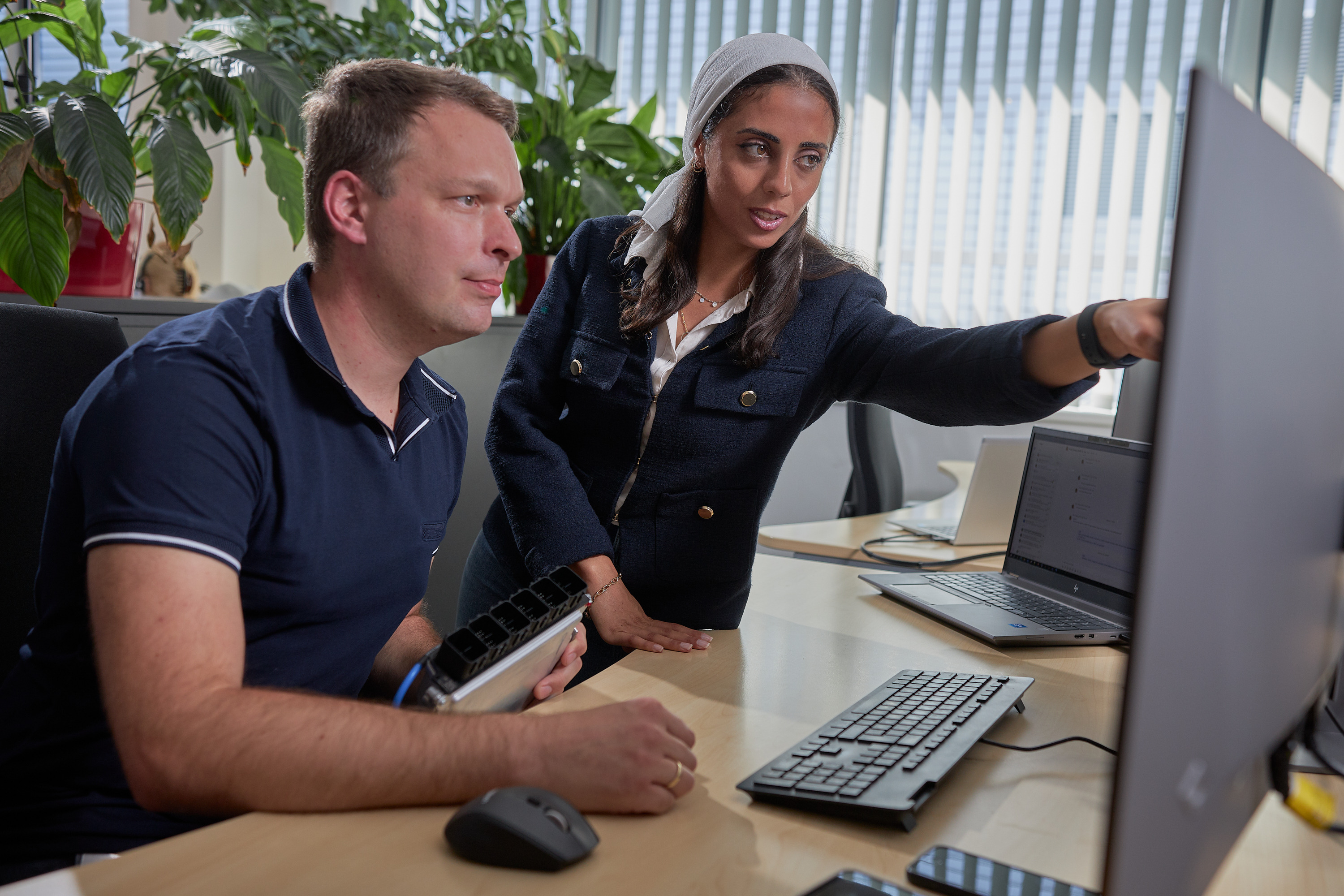
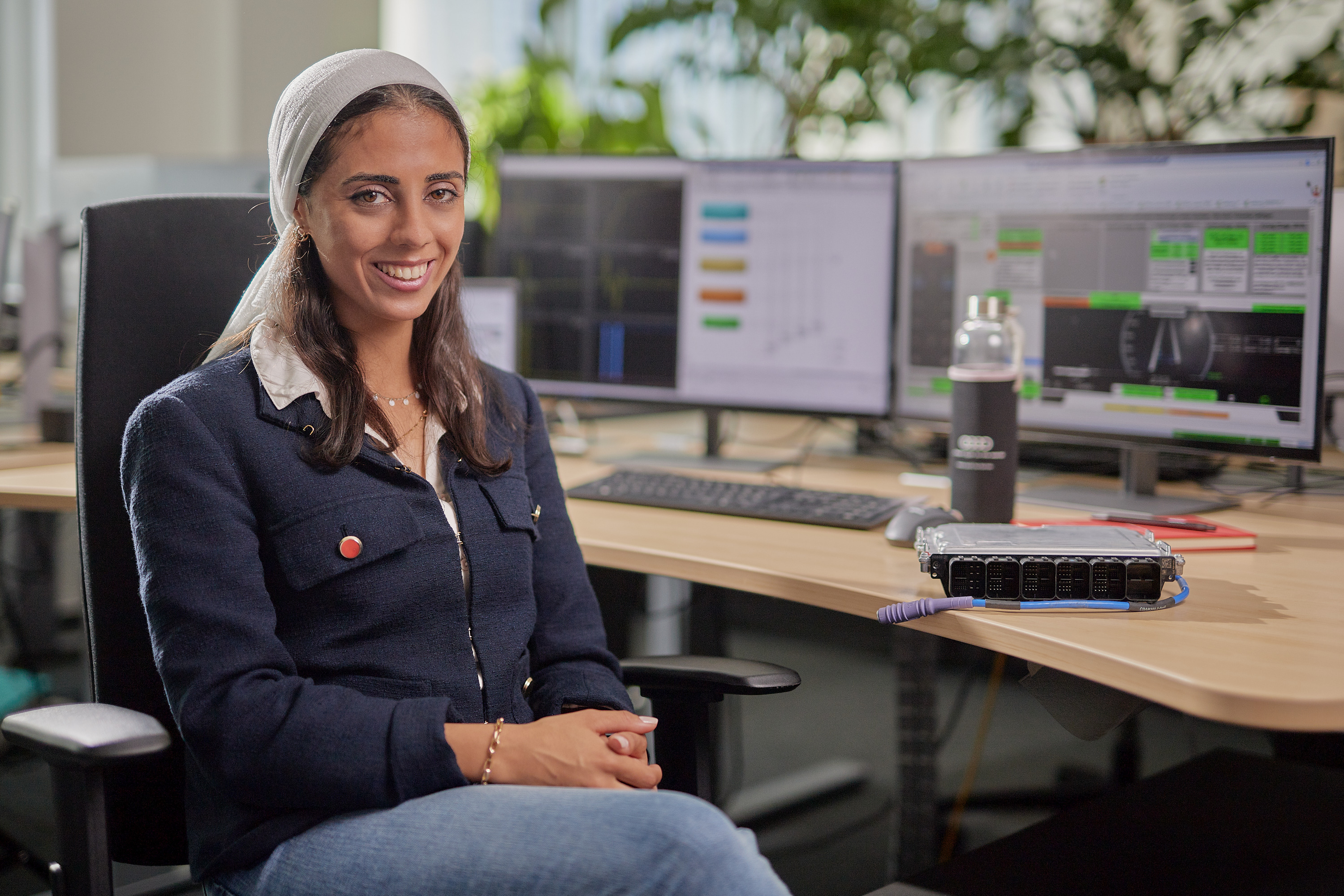
MH: I knew what to expect because our segment manager had told us about the ongoing projects and the upcoming tasks in advance. Based on this, one could apply proactively for the job, even from within the segment. Most of all, I was driven by the prospect that I could stay in my profession, yet I would work beyond the virtual space. What I really liked about HiL was that in addition to the simulations, there is also a tangible hardware part of the job. This way, I can also see how everything we work on is realized on a physical platform. I found this combination of software and hardware really exciting. The job presents challenges in the fields of IT, electrical engineering and vehicle technology. In fact, it includes all the topics that interest me. In addition, this position also offers a broad perspective. We can see the technological trends, and what the next hardware and software versions will look like in the cars of the near future.
HS: We are part of a project called “Virtual Test Drive”, which we call VPF for short for the German term “Virtuelle Probefahrt”. This project was created to provide the teams of Technical Development with a virtualised development and testing platform. The VPF platform allows engineers to test and fine-tune new hardware and software components in a cost-effective manner. Using this method, you can reduce the need for very expensive prototype developments. Currently, we are responsible for the so-called virtual driver component, and for its maintenance and development. We are developing the model of the virtual driver in MATLAB Simulink, while the solutions of dSpace help us in running and testing simulations. We use CI/CD methodology to share the finished models and other components.
MH: As Hana mentioned, we are responsible for the virtual driver component. This is just a small section of the VPF platform. The platform can be divided into two main parts: a simulation part and a physical part. In the simulation part, we create models to describe the behaviour of the virtual vehicle, for example. The physical section includes the components necessary for the embedded testing of real electronic components and software functions. The simulation topic can be subdivided into three components: the virtual vehicle, the world around it and the driver. Our unit is present in all areas, so we have a pretty good view of the entire platform.
But let’s get back to the tasks now. For example, my main task is to ensure that the virtual driver follows the specified route as accurately as possible during the tests, thus giving us the opportunity to test, for example, different driver assistance systems. We can also use several methods to make the virtual driver’s behaviour as similar as possible to that of a human in terms of controlling the vehicle.
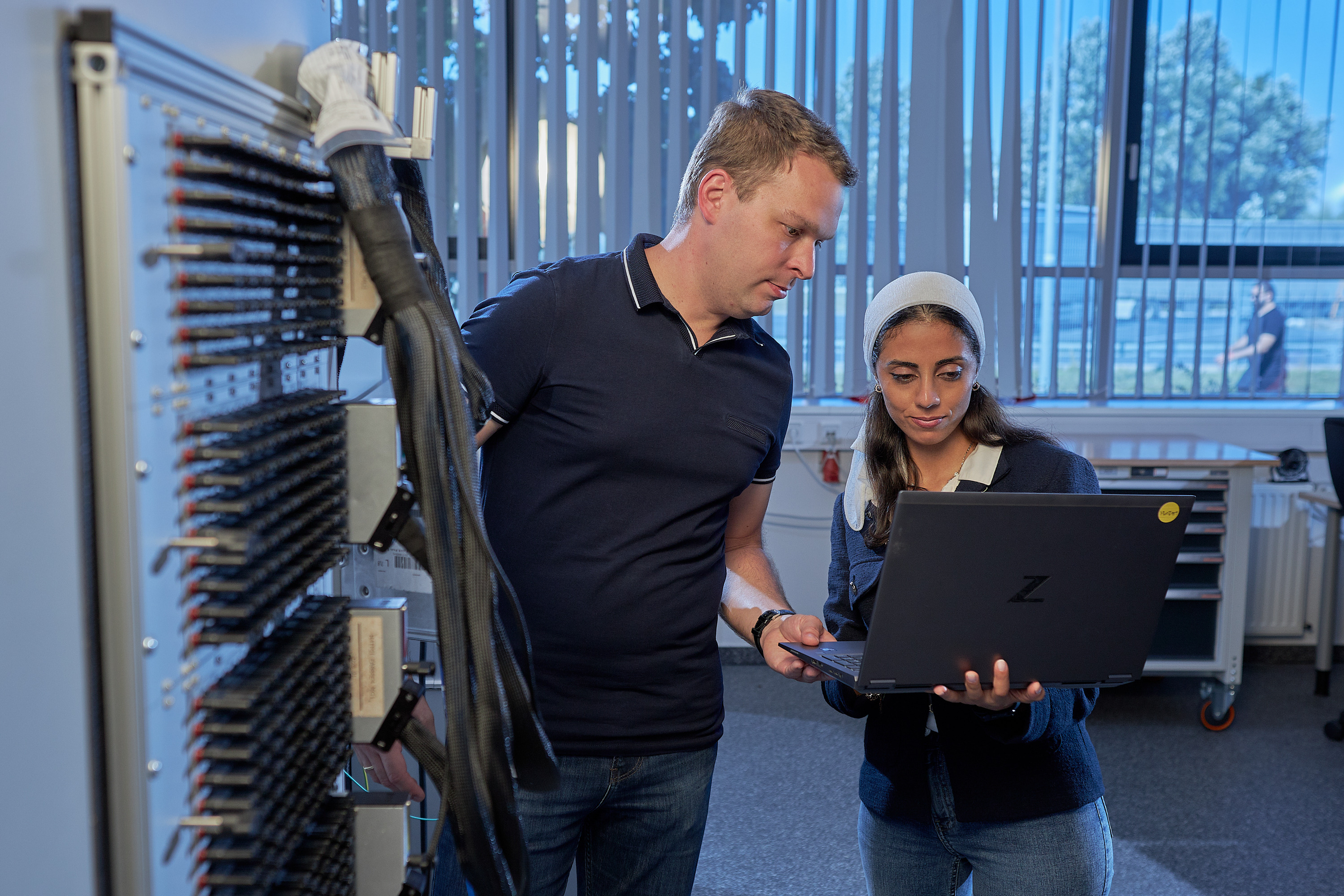

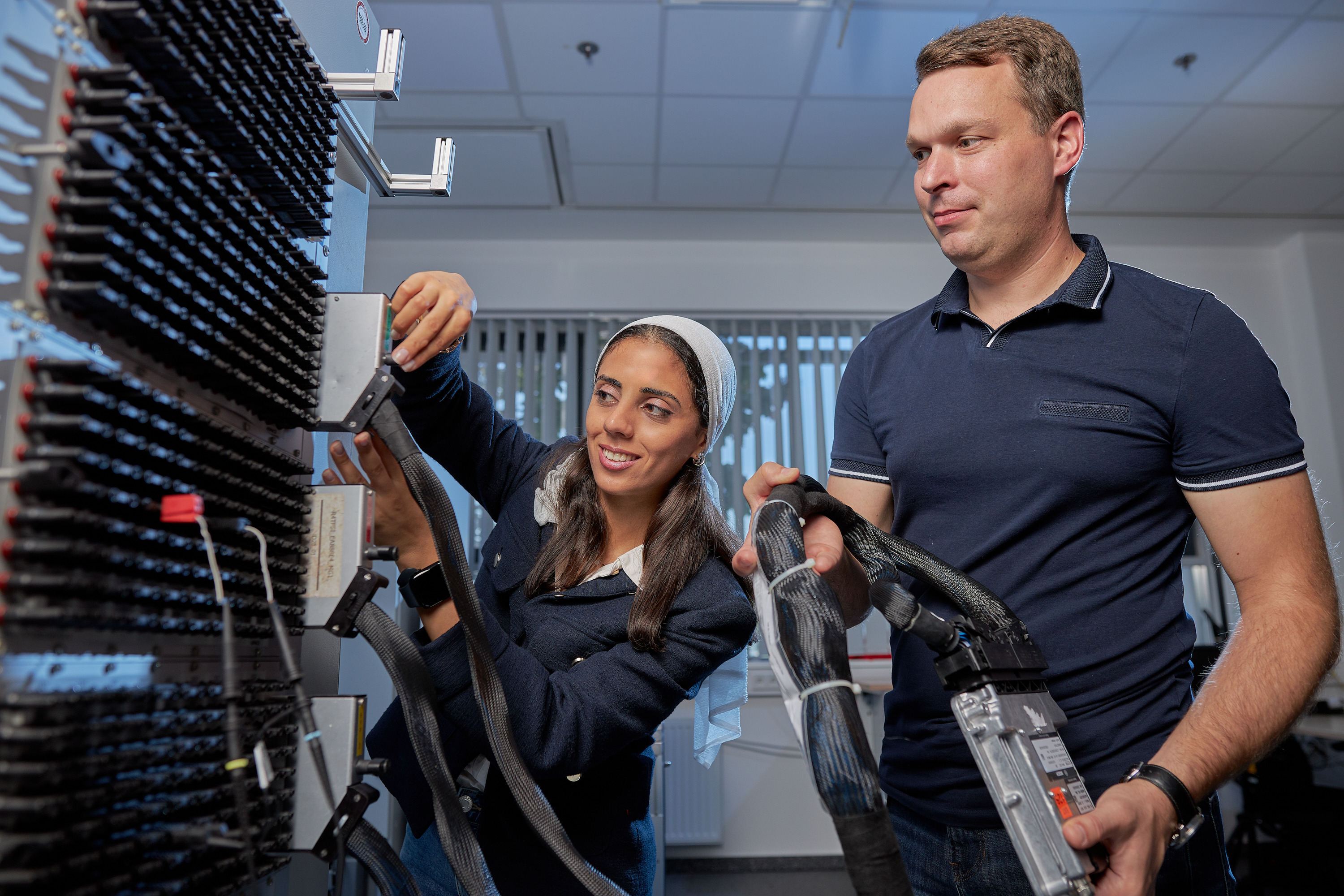
This, of course, sounds rather dry, but the process is very interesting in everyday life. First we design, then model, then simulate, and at the end of the process we reach the integrated tests, where we already use test benches equipped with real, physical components. And between the individual steps, we continue to refine our models. It is exciting to see how the features we developed in the first round in a fully simulated environment actually perform in the hardware-supported environment. This shows that we are not only sitting at the computer and punching numbers, but we can also see the physical implementation of the functions. This gives us the opportunity to see where the automotive industry and we, as Audi, are headed.
HS: If you look at the professional side, physics and mathematics built on solid foundations are essential. In addition, you may need to know model-based system design and the programming languages that can be used in the MATLAB and dSPACE software. I did not feel comfortable with these topics on a practical level at all, but the company and my colleagues helped me in everything to quickly acquire all the necessary know-how and practical experience to perform my tasks with confidence.
This, of course, requires an open-minded, curious, creative and courageous person who is open to new ideas, eager to learn, is looking for challenges and wants to create in their work.
MH: I agree with Hana. In addition, you also need an analytical, structured mindset, as we need to have a good understanding of a complex system. We need to be able to fit our own tasks into the big picture and see how the changes we make can affect other components. I believe that an advanced level of IT knowledge is also required, as you need to be able to find your way around in the maze of software applications, and this competence is also essential for constructing simulation models and programming.
HS: This is a field where, in addition to professional development, you can also experience tremendous personality development as we are constantly pushing our own limits, and this means a lot in the long run.
MH: It was a success when the lateral control of the virtual driver was stabilized after several weeks of hard work. Previously, the virtual driver had not been able to even get close to the specified route, so the virtual vehicle became uncontrollable during high-speed manoeuvres and ran off the road in the simulated environment. This situation, of course, also prevented further tests from being carried out.
We achieved the required stability by modifying the model and its parameters. The new parameters are changing the virtual driver’s behaviour depending on the speed. However, setting the right values was not an easy task. Via the automated tests of hundreds of simulations, we were finally able to find the values to stabilize the virtual vehicle when travelling along the specified route. When distributing the subtasks among ourselves, we built on the individual strengths of the team members. One of us prepared the model and compiled the test environment, and the other wrote the software to run the simulations automatically.
HS: “Beautiful Hungary” (answered Hana to the question immediately in Hungarian). Diversity means a lot to me within the team; it feels really good to come to work every day and not having to think and act on my own but rather as a team. Although we are all different, we still work as a unit, which makes our daily lives much better.
MH: The next big challenge in the life of our unit is to relocate the G-HiL test benches from Ingolstadt to Győr. G-HiL stands for Gesamtfahrzeug-HiL. These test benches already represent a complete vehicle, and the vast majority of electronic components are actually physically installed. These benches provide an opportunity for the embedded testing of individual functions and parts.
I believe that by taking over the test benches and the tasks related to them, we take great responsibility upon ourselves. Delegating such a responsible task to us required trust. We were able to build this trust by having everyone in our unit work on their own topics to the best of their abilities and with complete dedication. We thus experienced it as a joint success when our unit received the new assignment.
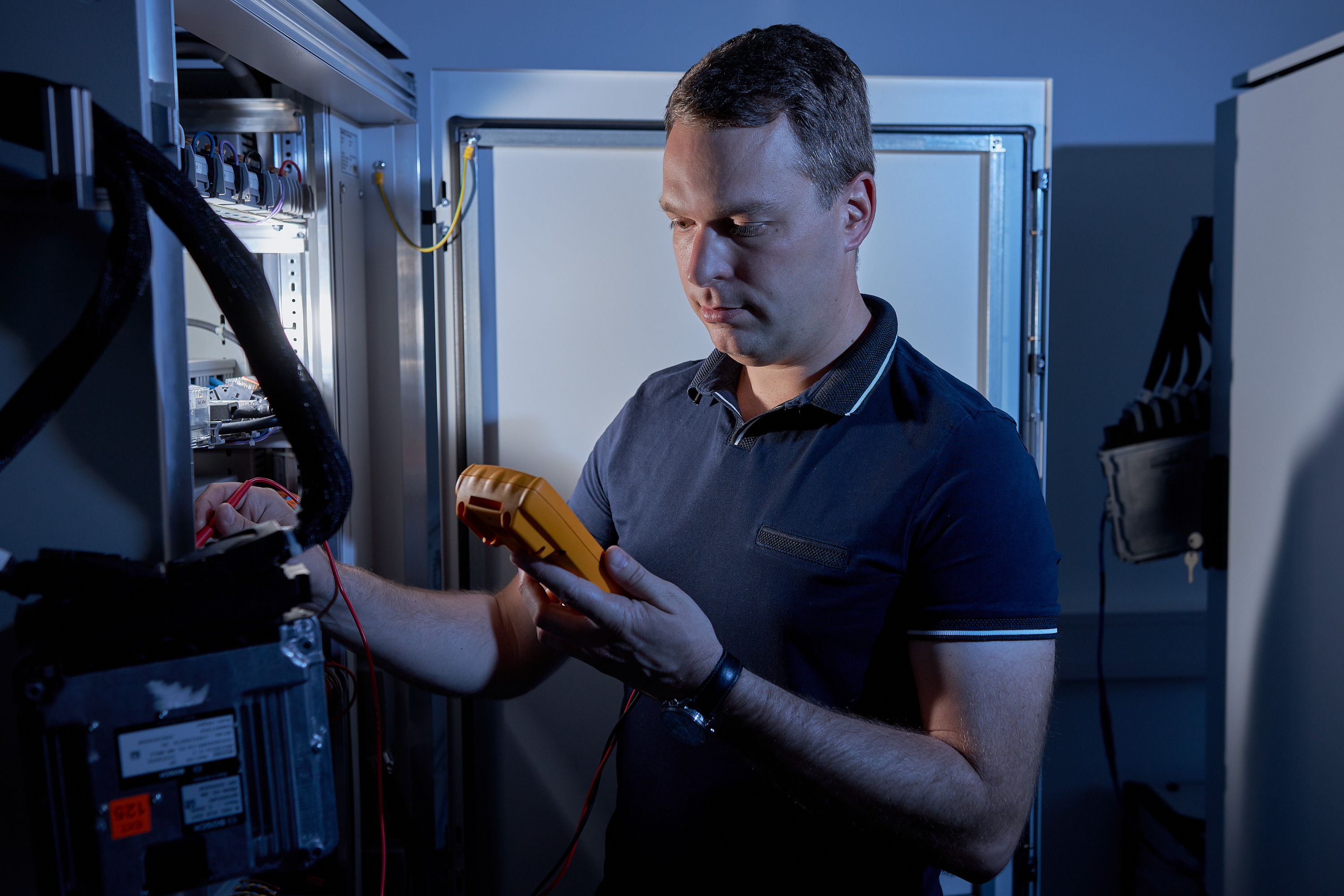
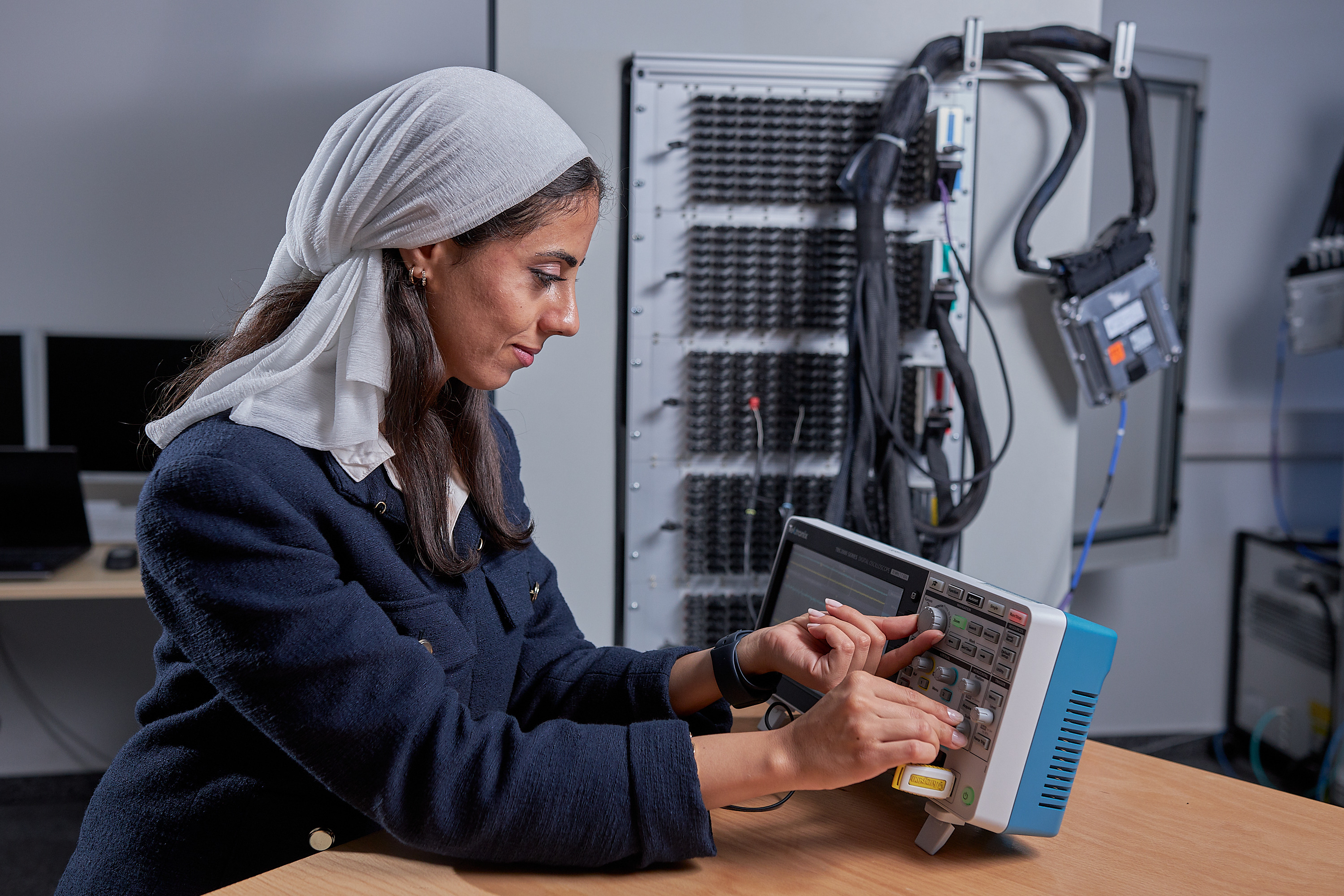
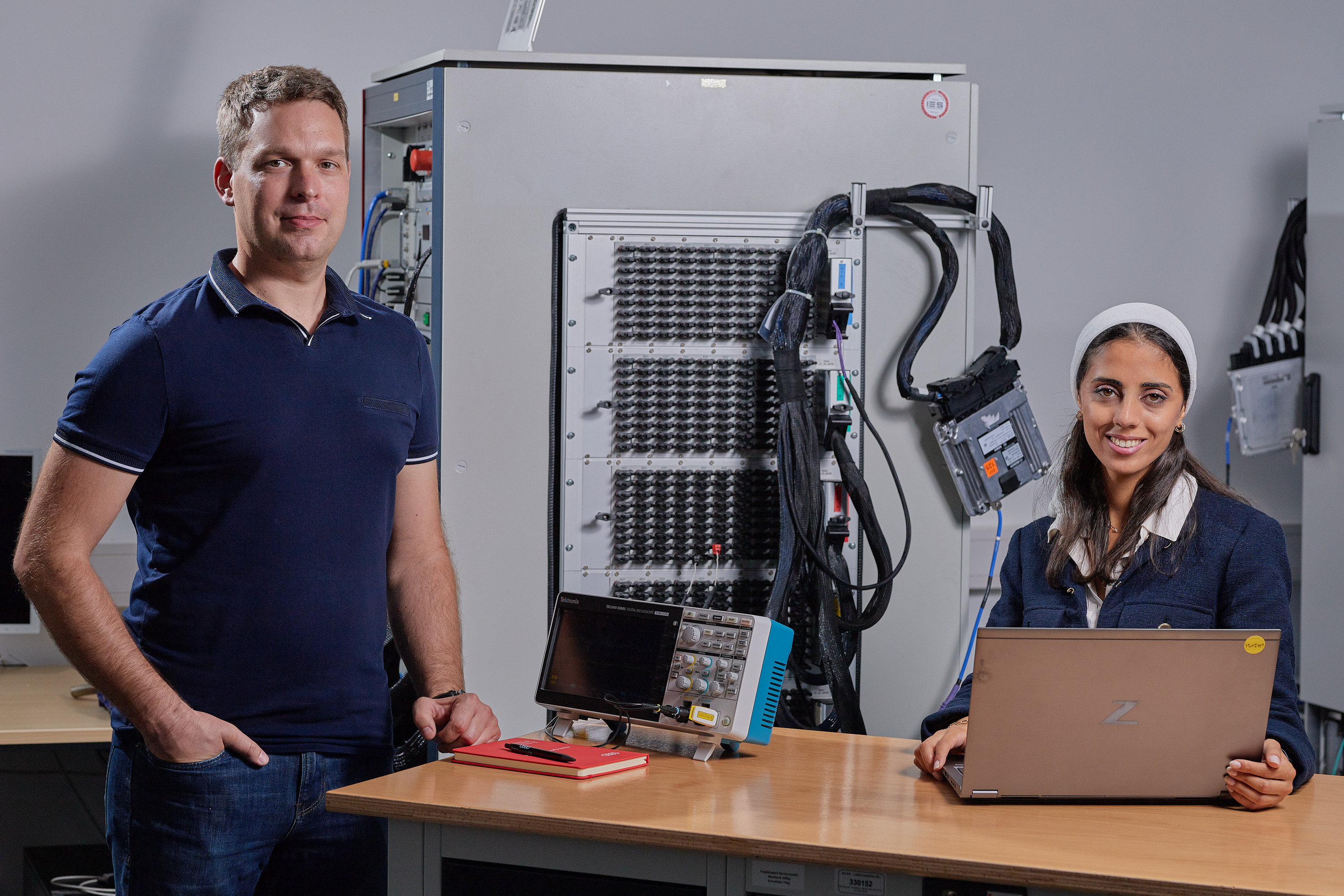
In my opinion, this new challenge also provides an opportunity to develop our team further. This is why we expect applications from new colleagues who can further strengthen our unit with their experience and are also open to acquiring new competencies.
If you are also interested in the world of Vehicle Development, check out our open positions on the link below: www.audi.hu/jarmufejlesztes
Address
9027 Győr, Audi Hungária út 1.
Phone
+ 36 96 66 8888
E-mail
You can read our current news on the News page.
If you need further information concerning our press materials, please, contact our colleagues at the Corporate Communication Department.